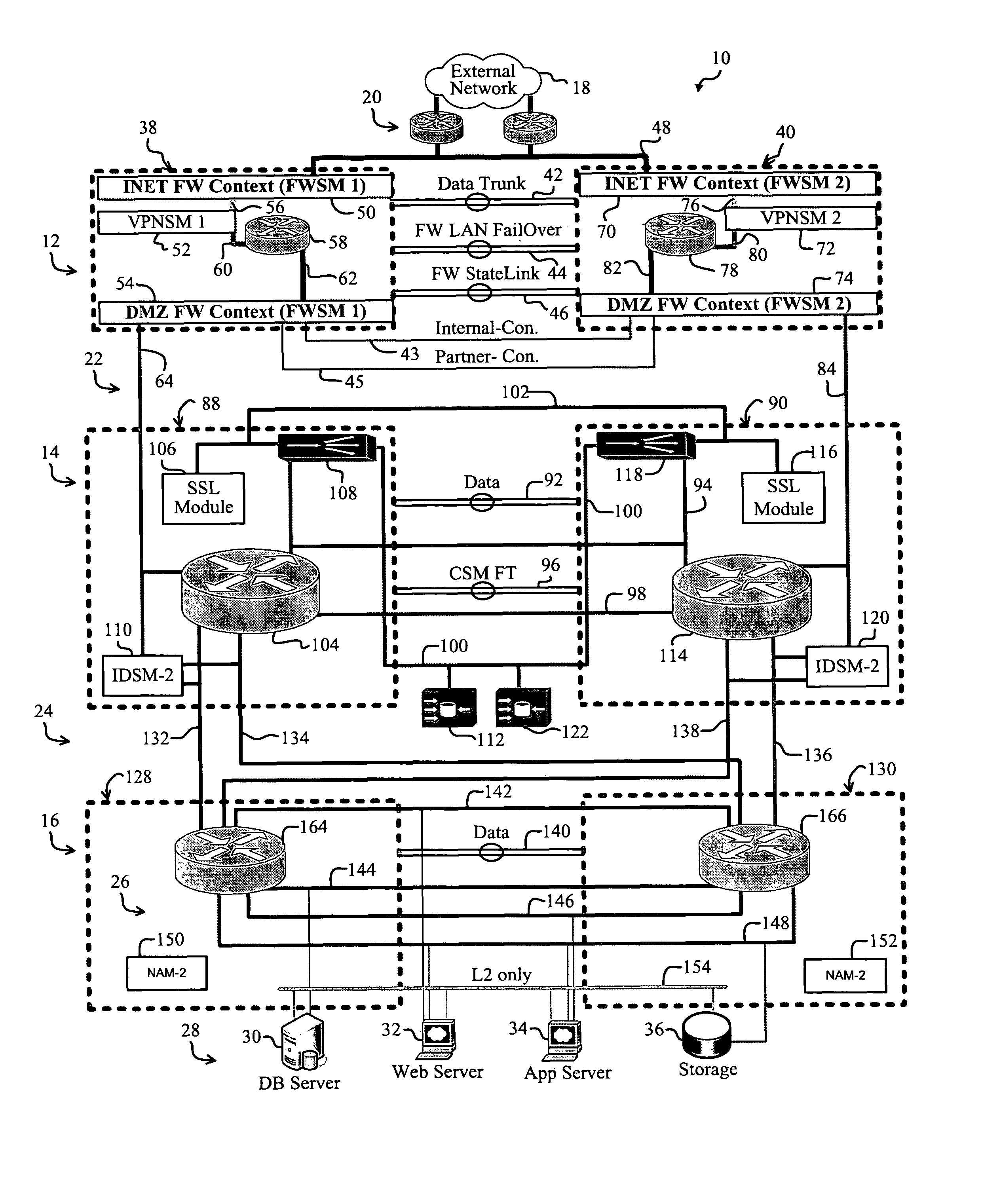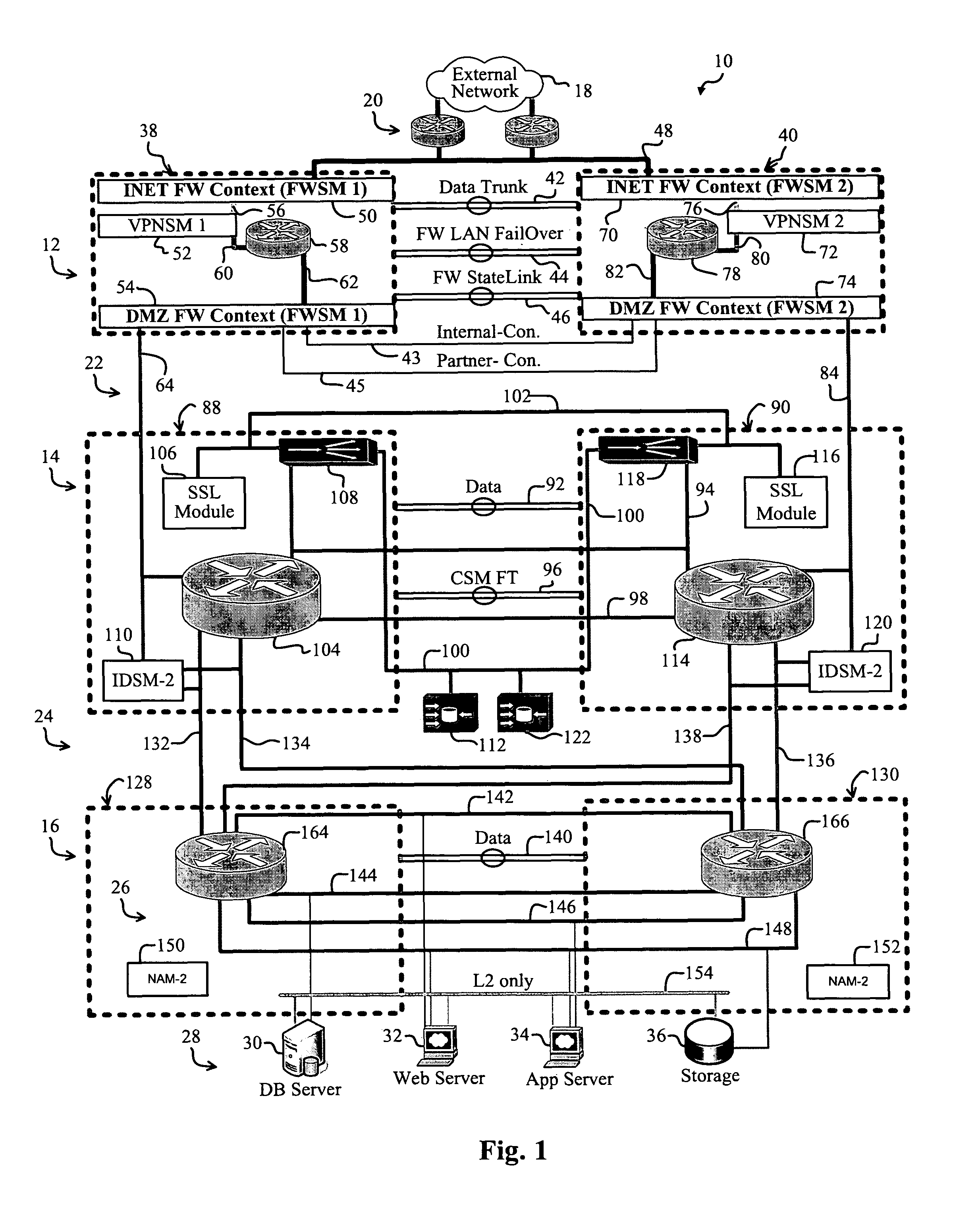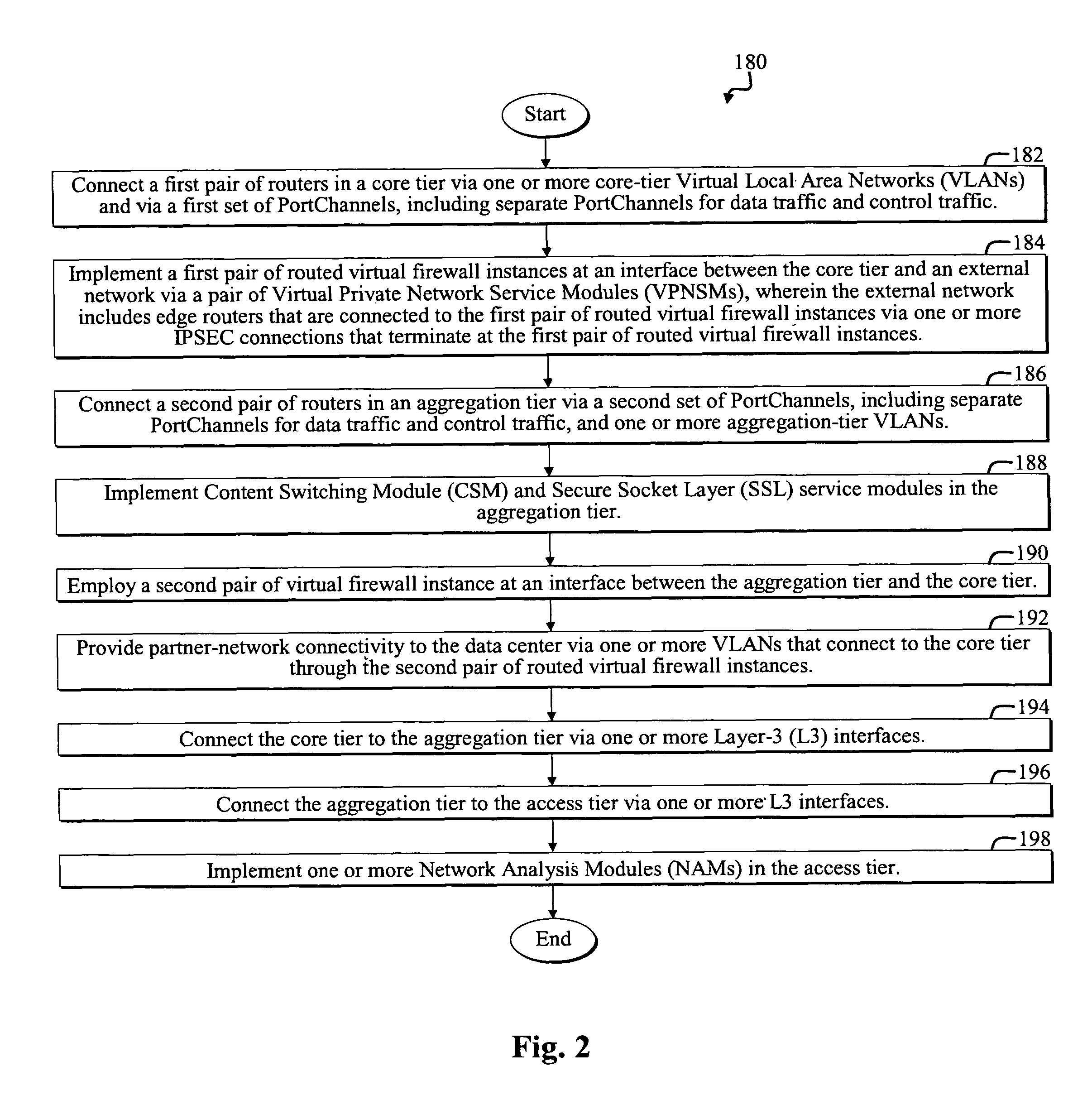Secure high-throughput data-center network employing routed firewalls
a high-throughput, firewall technology, applied in the field of network architecture, can solve the problems of inability to secure high-throughput data-center networks, etc., to achieve the effect of avoiding traffic bottlenecks, reducing the risk of traffic congestion, and avoiding traffic congestion
- Summary
- Abstract
- Description
- Claims
- Application Information
AI Technical Summary
Benefits of technology
Problems solved by technology
Method used
Image
Examples
Embodiment Construction
[0007]A preferred embodiment of the present invention implements a data-center network. In a specific embodiment, the data center includes a first data-center tier that that connects to an external network and to an internal portion of the data center. A first firewall instance interfaces the first tier and the external network. A second firewall instance interfaces the first tier and the internal portion of the data center. The data center reliably incorporates essential data center components in a secure, scalable, and redundant fashion.
[0008]For clarity, various well-known components, such as power supplies, modems, network blades, Service Providers (ISPs), browsers, standby modules, and so on, have been omitted from the figures. However, those skilled in the art with access to the present teachings will know which components to implement and how to implement them to meet the needs of a given application.
[0009]FIG. 1 is a diagram of a data-center network, i.e., a data center 10, ...
PUM
 Login to View More
Login to View More Abstract
Description
Claims
Application Information
 Login to View More
Login to View More - R&D
- Intellectual Property
- Life Sciences
- Materials
- Tech Scout
- Unparalleled Data Quality
- Higher Quality Content
- 60% Fewer Hallucinations
Browse by: Latest US Patents, China's latest patents, Technical Efficacy Thesaurus, Application Domain, Technology Topic, Popular Technical Reports.
© 2025 PatSnap. All rights reserved.Legal|Privacy policy|Modern Slavery Act Transparency Statement|Sitemap|About US| Contact US: help@patsnap.com



